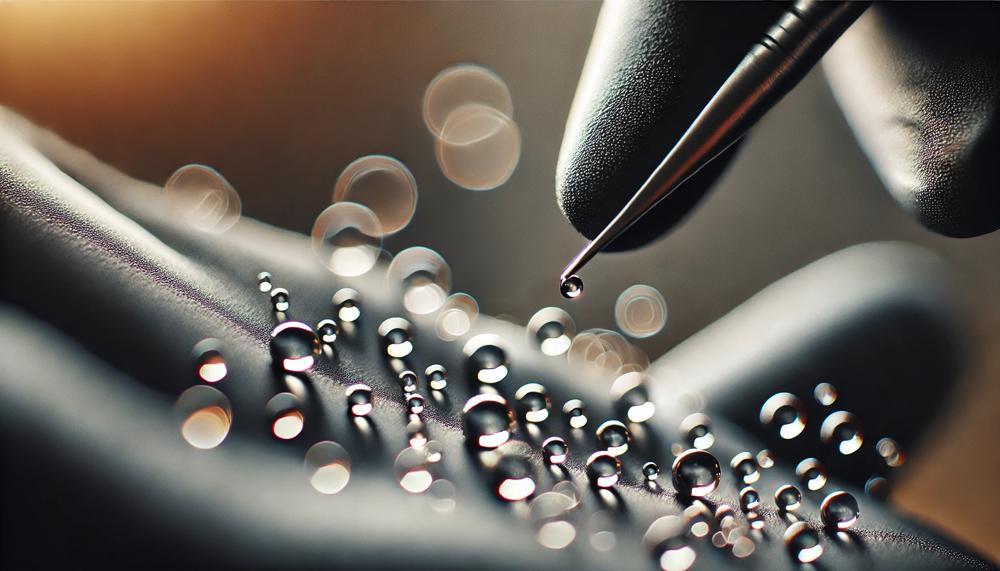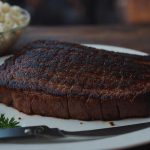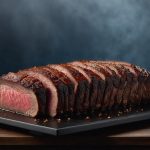Curious about the distinction between wet coating and powder coating? Whether you’re considering a new finish for your project or simply exploring different options, understanding these two methods is crucial. Wet coating involves the application of liquid paint, while powder coating uses electrostatically charged dry powder particles that are cured under heat. Each method offers unique advantages and considerations.
In this article, we’ll dive into the specifics of wet coating versus powder coating, covering everything from environmental impact and durability to customization options and application processes. By the end, you’ll have a clear grasp of which method suits your project best. To guide you through, here are the key differences:
- Wet coating uses liquid paint with solvents, while powder coating is solvent-free.
- Powder coating excels in durability and resistance, while wet coating offers more color options.
- Application processes vary significantly: multiple coats for wet coating versus a single coat and curing for powder coating.
Whether you prioritize environmental friendliness, durability, or aesthetic flexibility, this guide will help you make an informed decision. Let’s explore which coating method aligns perfectly with your project’s needs.
Contents
Composition
| Factors | Wet Coating | Powder Coating |
|---|---|---|
| Composition | Consists of liquid paint that typically includes solvents, binders, pigments, and additives. | Comprises dry powder particles composed of resins, pigments, and additives (such as flow agents). |
| Environmental Impact | Can release volatile organic compounds (VOCs) during application, contributing to pollution. | Produces minimal waste and VOC emissions, making it environmentally friendly. |
| Durability | May require multiple coats for adequate coverage; less resistant to chipping and scratching compared to powder coating. | Provides superior durability, resistant to chipping, scratching, fading, and corrosion. |
| Customization | Offers extensive options for colours and finishes due to the versatility of liquid additives and pigments. | Color choices may be limited due to the curing process, but various textures and effects can be achieved. |
| Application Process | Requires multiple coats and longer drying times; easier to touch up or repair. | Applied in a single coat, followed by curing in an oven; more challenging to touch up but provides a uniform finish. |
| Finish Quality | May result in runs or sags; finish quality depends on skill and equipment used. | Typically yields a smooth, uniform finish without runs or sags. |
Wet coating uses liquid paints containing solvents, binders, pigments, and additives, making it versatile for colour and finish customization but potentially releasing VOCs. In contrast, powder coating involves dry powder particles comprising resins, pigments, and additives, applied electrostatically then cured to form a durable finish without VOC emissions.
Powder coating offers superior durability against corrosion and physical damage, despite potential limitations in colour range compared to wet coating.
Application
Wet coating and powder coating are distinct methods used across various industries due to their different properties and application processes. The aerospace industry prefers wet paint over primer because it can be meticulously applied and offers a controlled finish that adheres to safety and performance standards.
Conversely, powder coating is seldom utilized here due to its potential interference with the precise mechanisms of aerospace parts.
In contrast, the automotive industry, which also demands precision but prioritizes durability and cost-efficiency, frequently opts for powder coating.
This method, which involves electrostatically charged dry powder being applied to parts and then cured under heat, provides a robust, resistant finish that stands up to harsh conditions and frequent use.
Comparison of Wet Coating and Powder Coating in Different Industries:
| Industry | Wet Coating | Powder Coating |
| Aerospace | Preferred for its ability to provide a thin, even coat over primer; crucial for maintaining the integrity of lightweight, precision-engineered parts. | Rarely used due to concerns about adding excess weight and the potential for clogging or disrupting sensitive components. |
| Automotive | Used for specific applications requiring custom color matching or when a very smooth finish is required. | Commonly used for its durability and cost-effectiveness, ideal for large scale production of parts exposed to rough conditions. |
The distinct approaches in these industries highlight the crucial role that the method of application plays based on the specific requirements of each sector.
Color and Texture
Color and texture are pivotal in distinguishing between wet coating and powder coating processes. Each method imparts unique visual and tactile qualities to coated surfaces, influencing their application and functionality in various industries.
- Color Consistency and Resistance: Powder coating is renowned for its ability to maintain color vibrancy and consistency. Unlike wet paint, which can fade or become inconsistent over time, powder coating employs thermosetting polymers that once cured, are less susceptible to fading and environmental damages. This makes powder-coated surfaces ideal for outdoor furniture, automotive parts, and other items exposed to harsh conditions.
- Texture Capabilities: Powder coating excels in offering diverse and unique textures that are challenging to replicate with wet paint. These textures range from smooth and glossy to matte and rugged, providing not only aesthetic value but also functional benefits like enhanced grip or reduced surface wear. This variety is particularly valued in industries where both durability and appearance are crucial.
Durability
Durability: When it comes to the durability of coatings, specifically comparing wet coating to powder coating, powder coating undoubtedly surpasses wet coating in terms of longevity and resistance to wear and tear.
| Aspect | Wet Coating | Powder Coating |
| Longevity | Less durable over time, prone to cracking and peeling under extreme conditions. | Highly durable, maintains integrity for years even under adverse conditions. |
| Resistance to Wear and Tear | Susceptible to scratches and marks, less suitable for high-traffic items. | Resists scratching, chipping, and other physical damages effectively. |
| Environmental Resistance | May fade or deteriorate when exposed to UV rays or harsh weather. | Excellent resistance to fading, retains colour and finish in varied environmental conditions. |
Powder coating’s superior durability is largely due to its unique application process and the formation of a hard finish that is tougher than conventional paint. This method involves electrostatically applying a dry powder, which is then cured under heat to form a skin-like layer over the surface. This skin is far more resistant to weathering, chemicals, and physical damage compared to the more traditional liquid wet paint.
For objects and projects where enduring resilience is required, especially those exposed to harsh outdoor conditions or requiring extensive handling — like automotive components, outdoor furniture, and heavy-duty machinery — powder coating is the preferred choice. This stark contrast in performance makes powder coating a standout option for those valuing longevity and robustness in their coatings.
Cost
The cost differences between wet coating and powder coating processes are influenced by several factors, such as initial material costs, application efficiency, and long-term durability, making powder coating often more economical despite higher upfront expenses.
To elaborate, wet coating typically has lower initial material costs compared to powder coating. However, powder coating excels in application efficiency and long-term benefits. Powder coating uses materials more efficiently, reducing waste as excess powder can be recycled, and its faster curing times reduce labor costs. Moreover, the durable finish of powder coating minimizes maintenance and replacement costs, adding to its cost-effectiveness over time.
Here’s a detailed breakdown of the costs involved in both processes:

| Cost Factor | Wet Coating | Powder Coating |
| Initial Material Costs | Lower | Higher |
| Application Efficiency | Less efficient, more waste | More efficient, recyclable excess |
| Long-term Durability | Less durable, more maintenance | Highly durable, less maintenance |
| Labor Costs | Higher due to longer processes | Lower due to quicker curing |
| Overall Cost-effectiveness | Less cost-effective over time | More cost-effective over time |
For more detailed insights into powder coating and its benefits, you can visit Wikipedia’s article on Powder Coating.
Safety
When tackling the realm of wet coating and powder coating processes, a host of safety considerations come into play. Here’s a crisp summary of the paramount aspects to ensure both processes are handled with utmost care.
- Ventilation and Air Quality: Both wet and powder coating release particulates and volatile organic compounds (VOCs) that can be hazardous if inhaled. Ensuring good ventilation in the work area is crucial to maintaining air quality and reducing the risk of respiratory issues.
- Fire and Explosion Hazards: Powder coatings are flammable and can form explosive mixtures in the air. It’s imperative to control sources of ignition and ensure proper handling to prevent fires or explosions.
- Personal Protective Equipment (PPE): Operators must wear appropriate PPE including respirators, gloves, and protective eyewear to guard against chemical exposure and physical hazards.
- Equipment Maintenance: Regular checks and maintenance of spraying equipment and exhaust systems are vital to prevent malfunctions that could lead to safety risks.
- Training and Procedures: Comprehensive training on proper application techniques and safety protocols ensures that workers are equipped to handle the materials safely and respond effectively to any incidents.
The Finishing Touches
Choosing the right finish for a project hinges on understanding both the strengths and limitations of wet coating and powder coating. Below are the essential factors to consider when making this decision:
- Durability: Powder coating generally offers a thicker and more resistant finish, making it ideal for items exposed to harsh conditions.
- Environmental Impact: Wet coatings often contain volatile organic compounds (VOCs) which can harm the environment. Powder coatings, conversely, typically boast a more environmentally friendly profile as they emit negligible VOCs.
- Appearance: While wet paint provides a glossy finish that can be fine-tuned for colour and texture, powder coating offers a thicker, more uniform layer which might limit its use where intricate detailing is required.
- Budget: Initial set-up costs for powder coating can be higher than for wet painting, largely due to the equipment and process required. However, over time, the durability and reduced need for retouches can render powder coating more cost-effective.
Conclusion
Deciding between wet coating and powder coating for your project involves weighing a blend of environmental impact, durability, aesthetics, and application techniques. Wet coating, leveraging liquid paints, shines in offering a spectrum of colors and finishes. Its adaptability makes it ideal for projects requiring precise hues or specific aesthetic qualities. However, this method may release volatile organic compounds (VOCs), posing environmental concerns.
On the flip side, powder coating stands out for its robustness and eco-friendliness. Utilizing dry powder instead of solvent-based liquids, it minimizes waste and VOC emissions. This method excels in creating a durable, uniform finish that resists chipping, scratching, and fading, making it suitable for items subjected to harsh conditions. While color options may be somewhat limited compared to wet coating, the finishes achieved through powder coating are impressively resilient and consistent.
Each method has its place depending on the project’s requirements.






